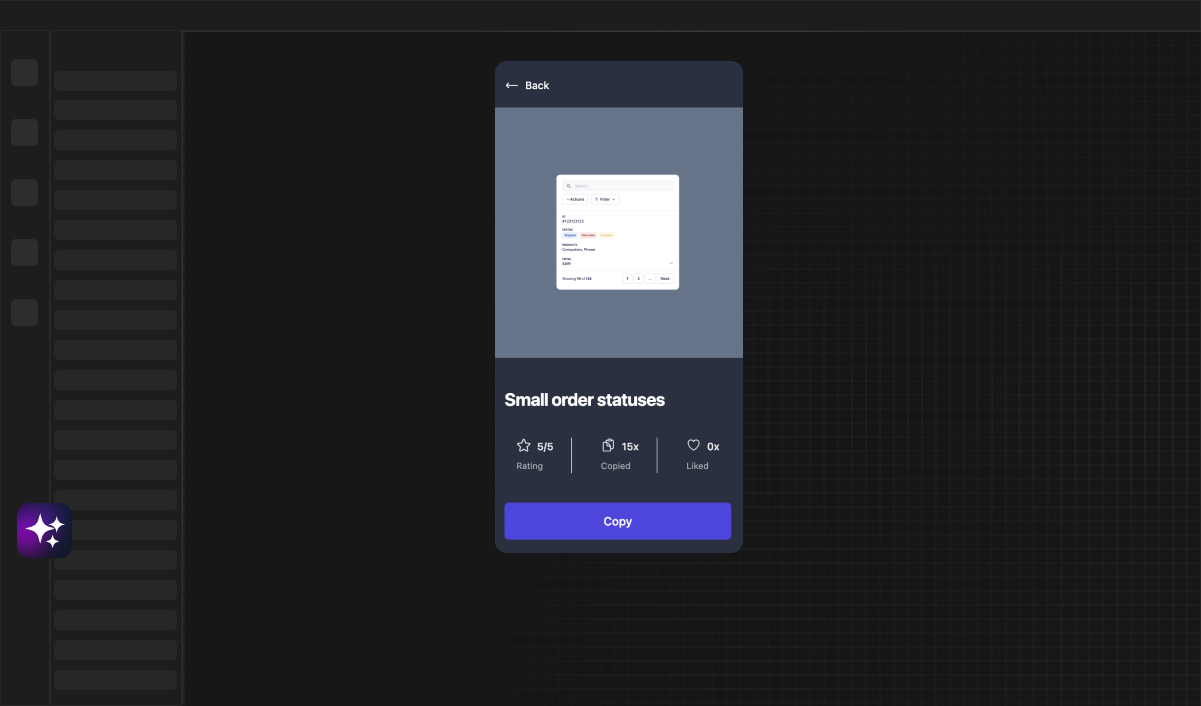
Web Developer
Workflows in Bubble: How to Make Your App Interactive
Dive into the world of no-code app development with our comprehensive guide on creating interactive workflows in Bubble. Discover how to enhance your app's user experience, optimize performance, and secure your workflows for success.
Understanding Workflows in Bubble
Defining Workflows in the Context of No-Code Development
Creating a dynamic and engaging app involves more than just a sleek design; it's about how the app behaves in response to user actions. That's where workflows come into play, especially in the no-code platform Bubble.io. Workflows are the backbone of your app's interactivity, allowing you to define a sequence of events that happen when certain conditions are met. Without writing a single line of code, you can automate processes, handle data, and create a personalized user experience.
The Importance of Workflows for App Interactivity
In Bubble, workflows are fundamental for breathing life into static pages. They can transform a simple form submission into an entry in a database, or a button click into a page navigation. Through workflows, your app can communicate with users, making each interaction feel intuitive and responsive. By mastering workflows, you enhance not only the functionality of your app but also its potential to provide value to your users.
Getting Started with Workflows in Bubble
Setting Up Your First Workflow
If you're new to Bubble, setting up your first workflow is an exciting step into the interactive world of app-building. On the Bubble.io platform, workflows are initiated by events, such as a user clicking a button or an element becoming visible on the page. To start, choose an event and then add actions that you want to occur in response. Each action represents a piece of the puzzle in your app's operation, from data creation to page transitions.
Best Practices for Workflow Initialization
When initializing workflows, it's crucial to plan ahead. Think about what you aim to achieve with each user interaction and how it fits into the larger scope of your app's functionality. Start simple, test often, and gradually add complexity as you become more comfortable with the workflow logic. Remember that each workflow should have a clear purpose and work reliably to keep your app's experience smooth and professional.
Mastering the Basics of Workflow Triggers
Trigger Types and Their Uses in Bubble Apps
Workflow triggers are the starting points for any interactive sequence in your Bubble app. These triggers can be user-initiated, such as clicking a button, or system-generated, like the completion of a previous workflow. Bubble offers a diverse range of triggers, each suited for different scenarios. Understanding the nuances of each trigger type is key to creating a tailored experience for your app's users.
Tips for Choosing the Right Triggers for User Interaction
Selecting the right trigger is essential for creating intuitive workflows. Consider the user's journey through your app and what actions they are likely to take. Prioritize triggers that feel natural and anticipate user needs. Also, be mindful of over-triggering, where too many workflows can lead to an overwhelming or confusing experience. Striking the right balance will make your app more enjoyable and user-friendly.
Crafting Actions within Bubble Workflows
Common Workflow Actions for Enhanced App Functionality
Actions are what make things happen in your app after a trigger is activated. In Bubble, you have a plethora of actions to choose from—navigating to another page, creating a new database entry, sending an email, or even changing the styling of an element. Strategically piecing together these actions enables you to build complex features without the need for traditional coding expertise.
Sequencing Actions for Optimal User Experience
The order in which actions occur within a workflow is critical. Actions should flow logically and seamlessly from one to the next to ensure users don't encounter unexpected results or delays. For instance, you may want to verify user data before proceeding to log them in or show a loading animation while a file is being uploaded. Test each sequence thoroughly to make sure your actions align with the intended user experience.
Incorporating Conditional Logic in Workflows
Implementing If-Then Scenarios in Your App
Conditional logic is what turns a linear workflow into a smart, decision-making process within your Bubble app. With conditions, your workflows can take different paths based on user data, inputs, or other factors. This allows for personalized experiences, such as showing different content to logged-in users versus guests or validating form entries before submission.
Strategies for Complex Logical Operations in Bubble
For more complex apps, your conditional logic will need to be robust and well-planned. This could involve multiple layers of conditions, or 'nested' conditions where one set of logic is contingent on another. Always aim for clarity and simplicity, even in complexity—each condition should be necessary and contribute to a better app experience. Test each condition to ensure it behaves as expected under various scenarios.
Debugging and Testing Workflows in Bubble
Troubleshooting Common Workflow Issues
No matter how well you plan your workflows, there might be times when things don't work as anticipated. Debugging is an essential skill in resolving these issues. Bubble provides tools and features that allow you to step through workflows, inspect data, and pinpoint where a workflow may be breaking down. Always test workflows in a controlled environment before deploying them to your live app.
Best Tools for Testing Workflow Efficacy
Testing is a continuous process and key to maintaining a high-quality app. Aside from Bubble's built-in debugger, consider using version control and other third-party testing tools to evaluate workflow performance. Conduct user tests to gather feedback and observe how actual users interact with your app's workflows. This hands-on insight is invaluable for refining and improving your app over time.
Advanced Workflow Techniques for Professional Apps
Looping and Recursive Workflows in Bubble
As you progress in your Bubble journey, you may encounter scenarios that require advanced workflow techniques like looping or recursion. Looping workflows allow you to perform repeated actions, such as processing a list of items one by one. Recursive workflows involve a workflow calling itself under certain conditions, which can be powerful but requires careful management to prevent infinite loops and performance issues.
Integrating APIs for Extended Functionality
Many contemporary apps rely on third-party services, and workflows in Bubble can seamlessly integrate with APIs to extend your app's capabilities. Whether it's pulling data from a weather service or processing payments via a financial API, understanding how to work with APIs within your workflows will unlock a new realm of possibilities for your app. Always ensure proper error handling and data security when dealing with external APIs.
Optimizing Workflow Performance in Bubble
Balancing Workflow Complexity with App Speed
As your Bubble app grows in complexity, maintaining optimal performance becomes a challenge. Workflows that are too dense or poorly structured can slow down your app and frustrate users. Strive to keep workflows as lean as possible by refining logic, removing unnecessary actions, and utilizing custom states effectively. Regularly review and refactor workflows to keep them efficient and fast.
Monitoring and Scaling Workflows for High Traffic Apps
For apps that experience high traffic, scaling workflows is critical. Monitor your app's performance and be proactive in making adjustments to accommodate growing user numbers. This may involve optimizing database interactions, caching frequently accessed data, or even offloading heavy processing to scheduled workflows. As traffic fluctuates, your workflows will need to adapt to ensure consistent app performance.
Learning from Real-World Workflow Examples
Case Studies: Successful Workflows in Bubble Apps
One of the best ways to learn about workflows in Bubble is by examining real-world examples. Look for case studies or app showcases that highlight how creators have solved common problems using workflows. Analyzing their strategies and techniques can provide insights that you can apply to your own projects. Sometimes, a clever workflow in another app can inspire new features in yours.
Analyzing Workflow Structures from Popular Bubble Templates
Bubble's template marketplace is a treasure trove of workflow ideas. Many templates are built by experienced Bubble developers and showcase best practices in workflow design. By dissecting these pre-made solutions, you can learn how to structure your workflows more effectively. Templates also serve as a starting point, saving you time and speeding up the development process for common app features.
Securing Your Workflows
Implementing Best Security Practices within Workflows
Security should never be an afterthought in app development, and that includes workflows. Ensure that your user data is protected by using Bubble's privacy rules and validating data before processing it in workflows. Be cautious with how you handle sensitive information and always encrypt data when necessary. A secure workflow not only protects your users but also builds trust and credibility for your app.
Role-Based Permissions and Workflow Access
Different users may require different levels of access to your app's features, and workflows need to respect these boundaries. Implement role-based permissions to control what actions users can perform. This could mean restricting certain workflows to admin users or allowing premium users access to additional functionality. Properly managing workflow access is essential for maintaining order and proper function within your app.
The Future of Workflows in Bubble and No-Code Platforms
Upcoming Features and Updates in Bubble Workflows
Bubble is continuously evolving, with new features and updates that enhance workflow capabilities. Staying up-to-date with the latest developments helps ensure that your app remains cutting-edge and competitive. Be on the lookout for announcements from Bubble and participate in the community to get early insights into new workflow features that can benefit your app development process.
Predicting Trends in No-Code Workflow Automation
The future of no-code platforms like Bubble is bright, and workflow automation is at the heart of this revolution. As AI and machine learning become more integrated into no-code tools, we can expect workflows to become even smarter and more intuitive. The ability to build complex, responsive apps without traditional coding skills will empower a new generation of developers and entrepreneurs to bring their ideas to life.
Resources and Communities for Bubble Workflow Mastery
Forums, Tutorials, and Courses for Learning Workflow Creation
Never stop learning when it comes to mastering workflows in Bubble. Utilize forums, tutorials, and online courses to deepen your understanding and enhance your skills. Websites like Framify.io provide not only a component library for Bubble.io but also valuable automations and resources to streamline your workflow creation process.
Networking with Other Bubble Developers for Insights and Support
The Bubble community is filled with developers and creators of all skill levels, from beginners to experts. Engaging with this community through forums, social media, and events can be a game-changer for your workflow development. Networking with peers allows you to exchange tips, seek support, and learn from the successes (and mistakes) of others, furthering your journey towards workflow mastery in Bubble.



